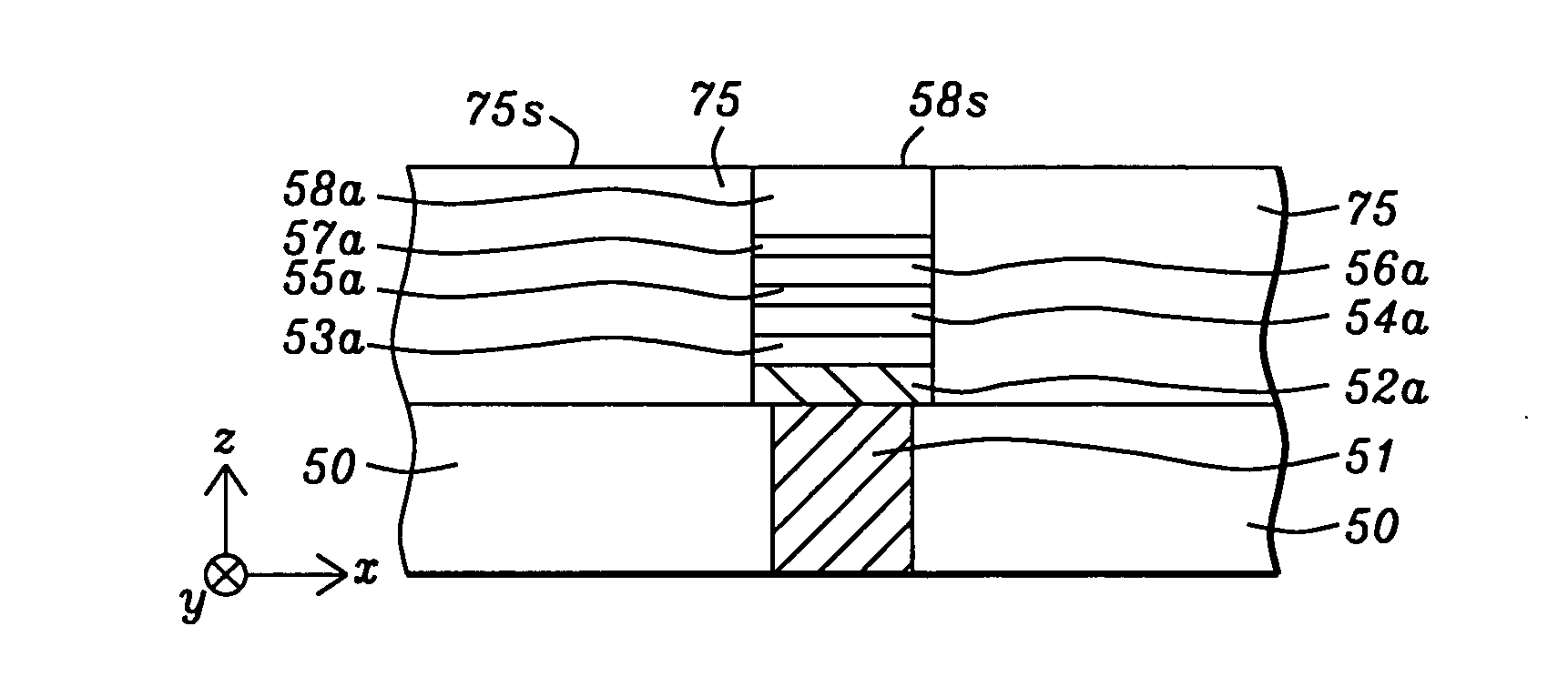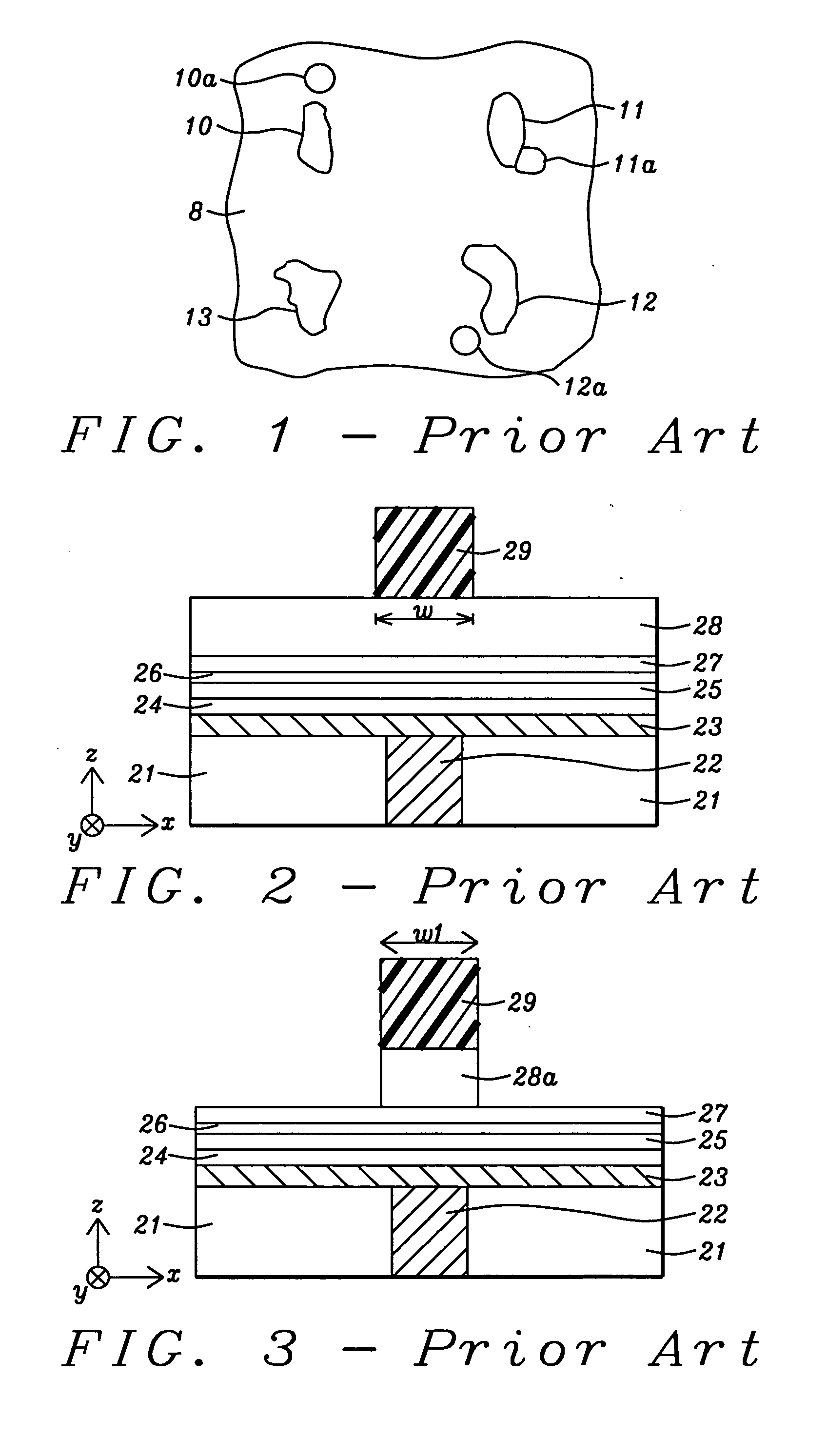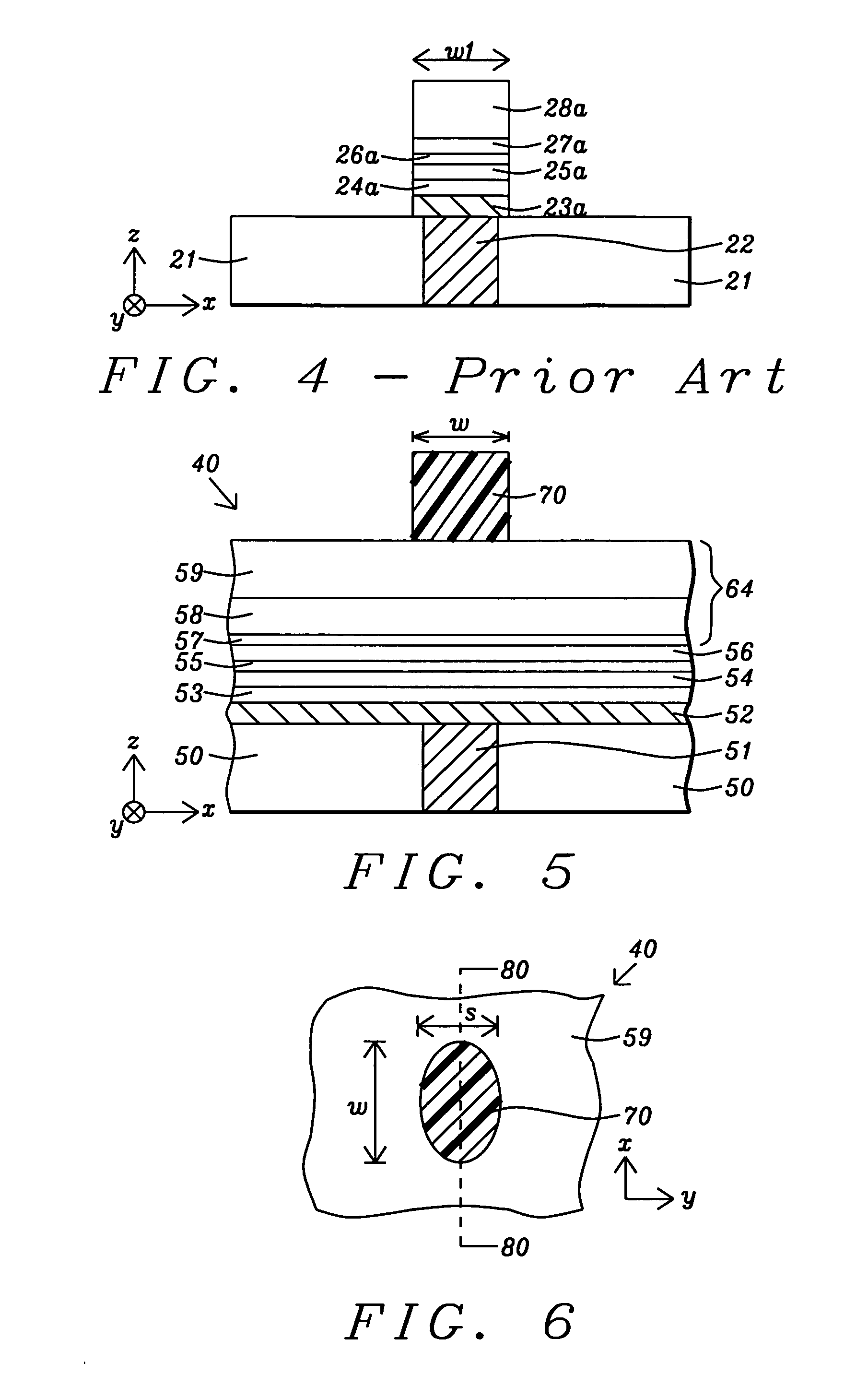Bi-layer hard mask for the patterning and etching of nanometer size MRAM devices
a nanometer-size mram and nano-layer technology, applied in the field of composite hard masks, can solve the problems of limiting the critical dimension (cd) of mram devices, affecting the production efficiency of unable to manufacture very high density ic devices such as spin torque mram, so as to prevent metal etch residue formation
- Summary
- Abstract
- Description
- Claims
- Application Information
AI Technical Summary
Benefits of technology
Problems solved by technology
Method used
Image
Examples
Embodiment Construction
[0027]The present invention is a hard mask design and a method of using the hard mask to form MTJ elements in advanced memory devices including MRAM and STT-MRAM. The drawings are provided by way of example and are not intended to limit the scope of the invention. Although a bottom spin valve MTJ structure is described in the exemplary embodiment, the present invention also encompasses other MTJ configurations such as top spin valve and multi-layer spin valve structures. The present invention also anticipates that the hard axis and easy axis dimensions of a MTJ element may be formed in separate steps. In this case, the sequence of photoresist patterning and subsequent etch steps outlined in the exemplary embodiment may be used to define a first CD that is an x-axis dimension of a MTJ, for example. Then the sequence of photoresist patterning and etch steps may be repeated to define a second CD that is a y-axis dimension of the MTJ. Only one MTJ is shown in the exemplary embodiment in...
PUM
| Property | Measurement | Unit |
|---|---|---|
| Thickness | aaaaa | aaaaa |
| Thickness | aaaaa | aaaaa |
| Thickness | aaaaa | aaaaa |
Abstract
Description
Claims
Application Information
 Login to View More
Login to View More - R&D
- Intellectual Property
- Life Sciences
- Materials
- Tech Scout
- Unparalleled Data Quality
- Higher Quality Content
- 60% Fewer Hallucinations
Browse by: Latest US Patents, China's latest patents, Technical Efficacy Thesaurus, Application Domain, Technology Topic, Popular Technical Reports.
© 2025 PatSnap. All rights reserved.Legal|Privacy policy|Modern Slavery Act Transparency Statement|Sitemap|About US| Contact US: help@patsnap.com



